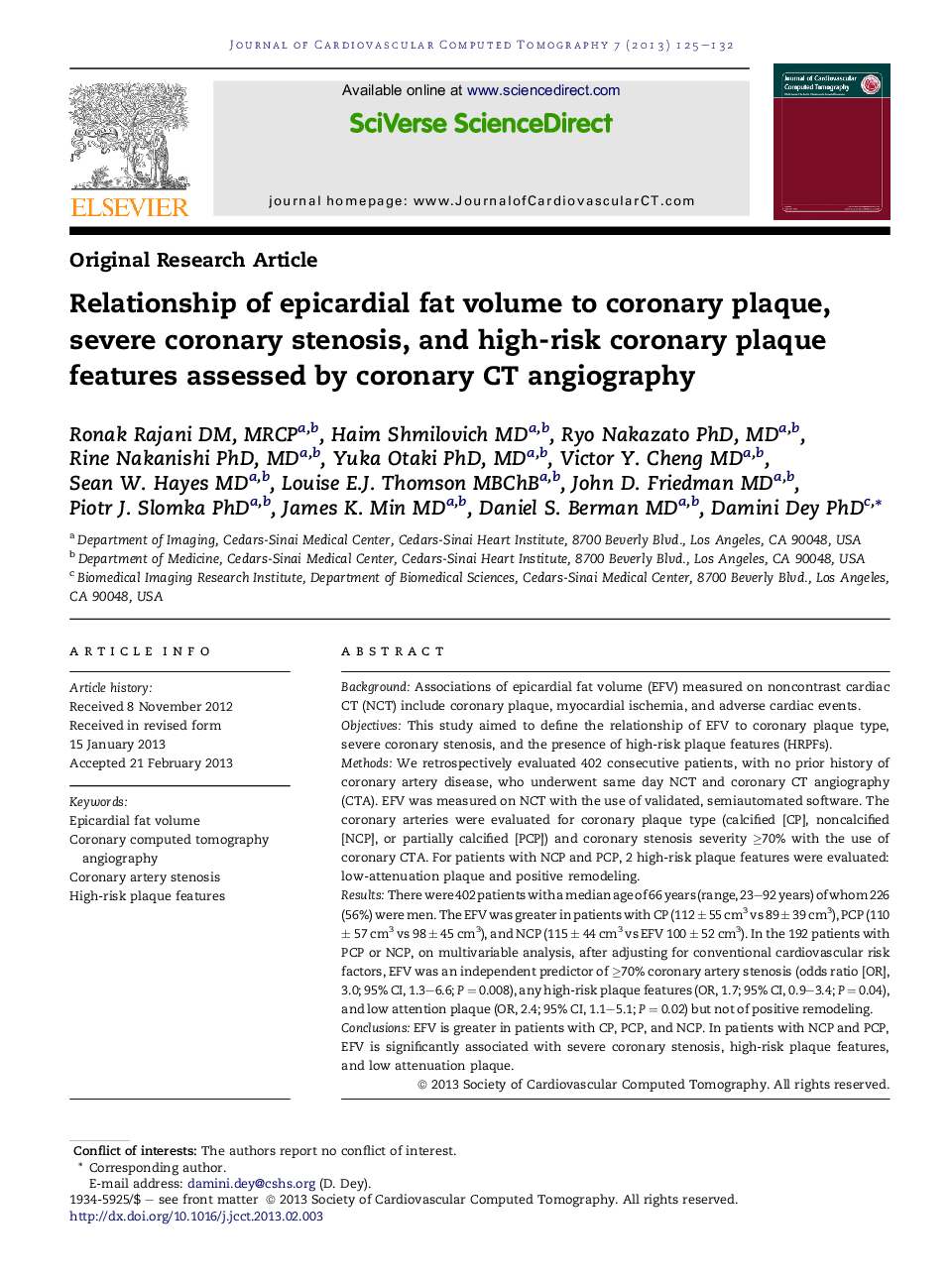| Article ID | Journal | Published Year | Pages | File Type |
|---|---|---|---|---|
| 5985000 | Journal of Cardiovascular Computed Tomography | 2013 | 8 Pages |
BackgroundAssociations of epicardial fat volume (EFV) measured on noncontrast cardiac CT (NCT) include coronary plaque, myocardial ischemia, and adverse cardiac events.ObjectivesThis study aimed to define the relationship of EFV to coronary plaque type, severe coronary stenosis, and the presence of high-risk plaque features (HRPFs).MethodsWe retrospectively evaluated 402 consecutive patients, with no prior history of coronary artery disease, who underwent same day NCT and coronary CT angiography (CTA). EFV was measured on NCT with the use of validated, semiautomated software. The coronary arteries were evaluated for coronary plaque type (calcified [CP], noncalcified [NCP], or partially calcified [PCP]) and coronary stenosis severity â¥70% with the use of coronary CTA. For patients with NCP and PCP, 2 high-risk plaque features were evaluated: low-attenuation plaque and positive remodeling.ResultsThere were 402 patients with a median age of 66 years (range, 23-92 years) of whom 226 (56%) were men. The EFV was greater in patients with CP (112 ± 55 cm3 vs 89 ± 39 cm3), PCP (110 ± 57 cm3 vs 98 ± 45 cm3), and NCP (115 ± 44 cm3 vs EFV 100 ± 52 cm3). In the 192 patients with PCP or NCP, on multivariable analysis, after adjusting for conventional cardiovascular risk factors, EFV was an independent predictor of â¥70% coronary artery stenosis (odds ratio [OR], 3.0; 95% CI, 1.3-6.6; P = 0.008), any high-risk plaque features (OR, 1.7; 95% CI, 0.9-3.4; P = 0.04), and low attention plaque (OR, 2.4; 95% CI, 1.1-5.1; P = 0.02) but not of positive remodeling.ConclusionsEFV is greater in patients with CP, PCP, and NCP. In patients with NCP and PCP, EFV is significantly associated with severe coronary stenosis, high-risk plaque features, and low attenuation plaque.
